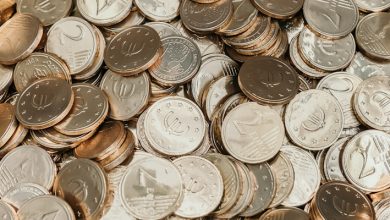How to Read Crypto Charts: Introduction to Technical Analysis

- Understanding the Basics of Crypto Charts
- Introduction to Technical Analysis in Cryptocurrency Trading
- Key Concepts and Terminology of Crypto Charts
- Analyzing Price Movements with Candlestick Patterns
- Identifying Trends and Patterns in Crypto Charts
- Using Technical Indicators to Make Informed Trading Decisions
Understanding the Basics of Crypto Charts
Understanding the basics of crypto charts is essential for anyone looking to analyze and interpret the price movements of cryptocurrencies. Crypto charts provide valuable information about the historical performance of a cryptocurrency, allowing traders and investors to make informed decisions about buying or selling. By learning how to read crypto charts, you can gain insights into the market trends and patterns that can help predict future price movements.
Introduction to Technical Analysis in Cryptocurrency Trading
When it comes to cryptocurrency trading, understanding technical analysis is crucial for making informed decisions. Technical analysis involves studying historical price data and volume to predict future price movements. By analyzing crypto charts, traders can identify trends, patterns, and key levels that can help them determine the best time to buy or sell.
One of the basic principles of technical analysis is that price movements are not random, but rather follow a pattern that can be identified and used to make trading decisions. By using tools like moving averages, support and resistance levels, and various indicators, traders can gain insights into market sentiment and potential price direction.
Learning how to read crypto charts and interpret technical analysis indicators can give traders a competitive edge in the volatile cryptocurrency market. It allows them to make more informed decisions based on data and analysis rather than emotions or speculation. By understanding technical analysis, traders can better manage risk and improve their chances of success in crypto trading.
Key Concepts and Terminology of Crypto Charts
When delving into the world of cryptocurrency charts, it’s essential to familiarize yourself with key concepts and terminology to make informed decisions. Understanding these terms will help you interpret charts accurately and identify potential trends.
One crucial concept to grasp is support and resistance levels. Support refers to a price point where an asset tends to stop falling, while resistance is a level where it struggles to break through. These levels are essential for identifying possible entry and exit points in the market.
Another important term is moving averages. These are indicators that smooth out price data to identify trends over a specific period. They help traders spot potential reversals or confirm existing trends, providing valuable insights into market movements.
Candlestick patterns are also crucial in analyzing crypto charts. These visual representations of price movements show traders key information such as opening and closing prices, as well as highs and lows during a specific period. Recognizing these patterns can help predict future price movements.
Volume is another vital aspect of crypto charts. It shows the number of assets traded during a specific period, indicating the strength of a price movement. High volume often confirms the validity of a trend, while low volume may suggest a lack of interest in a particular asset.
Lastly, indicators such as Relative Strength Index (RSI) and Moving Average Convergence Divergence (MACD) can provide valuable insights into market conditions. RSI measures the speed and change of price movements, while MACD identifies changes in momentum. By using these indicators in conjunction with other analysis tools, traders can make more informed decisions when reading crypto charts.
Analyzing Price Movements with Candlestick Patterns
When analyzing price movements in crypto charts, it can be helpful to utilize candlestick patterns. These patterns can provide valuable insights into market sentiment and potential future price movements. By understanding how to interpret these patterns, traders can make more informed decisions when buying or selling cryptocurrencies.
One of the most common candlestick patterns is the “doji,” which typically indicates indecision in the market. A doji candle has a small body with wicks on both ends, suggesting that buyers and sellers are evenly matched. This pattern often precedes a reversal in price direction, making it important to pay attention to when it appears on a chart.
Another important candlestick pattern to watch for is the “hammer,” which is characterized by a small body and a long lower wick. Hammers are typically seen at the bottom of a downtrend and can signal a potential reversal to the upside. Traders often use this pattern as a buying signal, as it suggests that buyers are stepping in to push the price higher.
On the other hand, the “shooting star” candlestick pattern is the opposite of the hammer and is typically seen at the top of an uptrend. This pattern has a small body with a long upper wick, indicating that sellers are starting to push the price lower. The appearance of a shooting star can be a sign that a trend reversal may be imminent, prompting traders to consider selling their positions.
By learning how to identify and interpret different candlestick patterns, traders can gain a better understanding of market dynamics and make more informed trading decisions. These patterns are just one tool in a trader’s toolbox, but they can provide valuable insights into potential price movements and help traders navigate the often volatile world of cryptocurrency trading.
Identifying Trends and Patterns in Crypto Charts
One of the key aspects of reading crypto charts is identifying trends and patterns. By analyzing historical price data, traders can spot recurring patterns that may indicate potential future price movements. These trends can take various forms, such as uptrends, downtrends, or sideways trends.
Uptrends are characterized by higher highs and higher lows, indicating a bullish market sentiment. Downtrends, on the other hand, are marked by lower highs and lower lows, signaling a bearish trend. Sideways trends, also known as consolidation, occur when the price fluctuates within a certain range without a clear direction.
In addition to trends, traders also look for patterns in crypto charts, such as triangles, flags, and head and shoulders formations. These patterns can provide valuable insights into potential price movements. For example, a symmetrical triangle pattern may suggest a period of consolidation before a breakout occurs.
Overall, by analyzing trends and patterns in crypto charts, traders can make more informed decisions about when to buy or sell cryptocurrencies. It is essential to combine technical analysis with other factors, such as market news and sentiment, to develop a comprehensive trading strategy.
Using Technical Indicators to Make Informed Trading Decisions
Technical indicators are valuable tools that traders use to analyze market trends and make informed decisions when trading cryptocurrencies. By utilizing these indicators, traders can gain insights into the price movements of various cryptocurrencies and identify potential opportunities for profitable trades.
One of the most commonly used technical indicators is the Moving Average, which helps traders smooth out price data to identify trends over a specific period. Another popular indicator is the Relative Strength Index (RSI), which measures the speed and change of price movements to determine if a cryptocurrency is overbought or oversold.
Traders can also use the Moving Average Convergence Divergence (MACD) indicator to identify changes in a cryptocurrency’s momentum and potential buy or sell signals. Additionally, the Bollinger Bands indicator can help traders determine the volatility of a cryptocurrency and identify potential entry or exit points.
By combining multiple technical indicators, traders can get a more comprehensive view of the market and make more informed trading decisions. It is essential to understand how each indicator works and how to interpret their signals accurately to maximize profits and minimize risks when trading cryptocurrencies.



